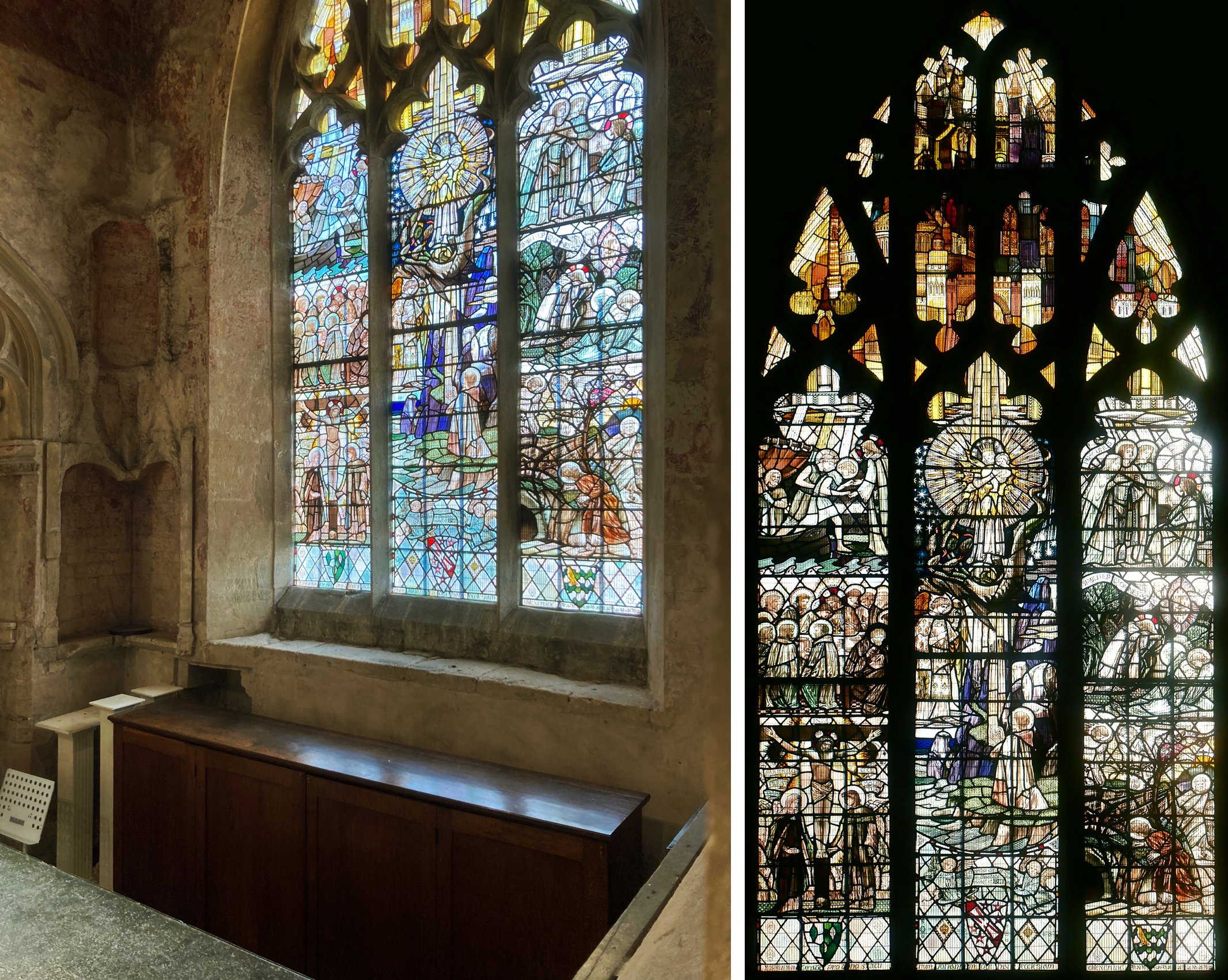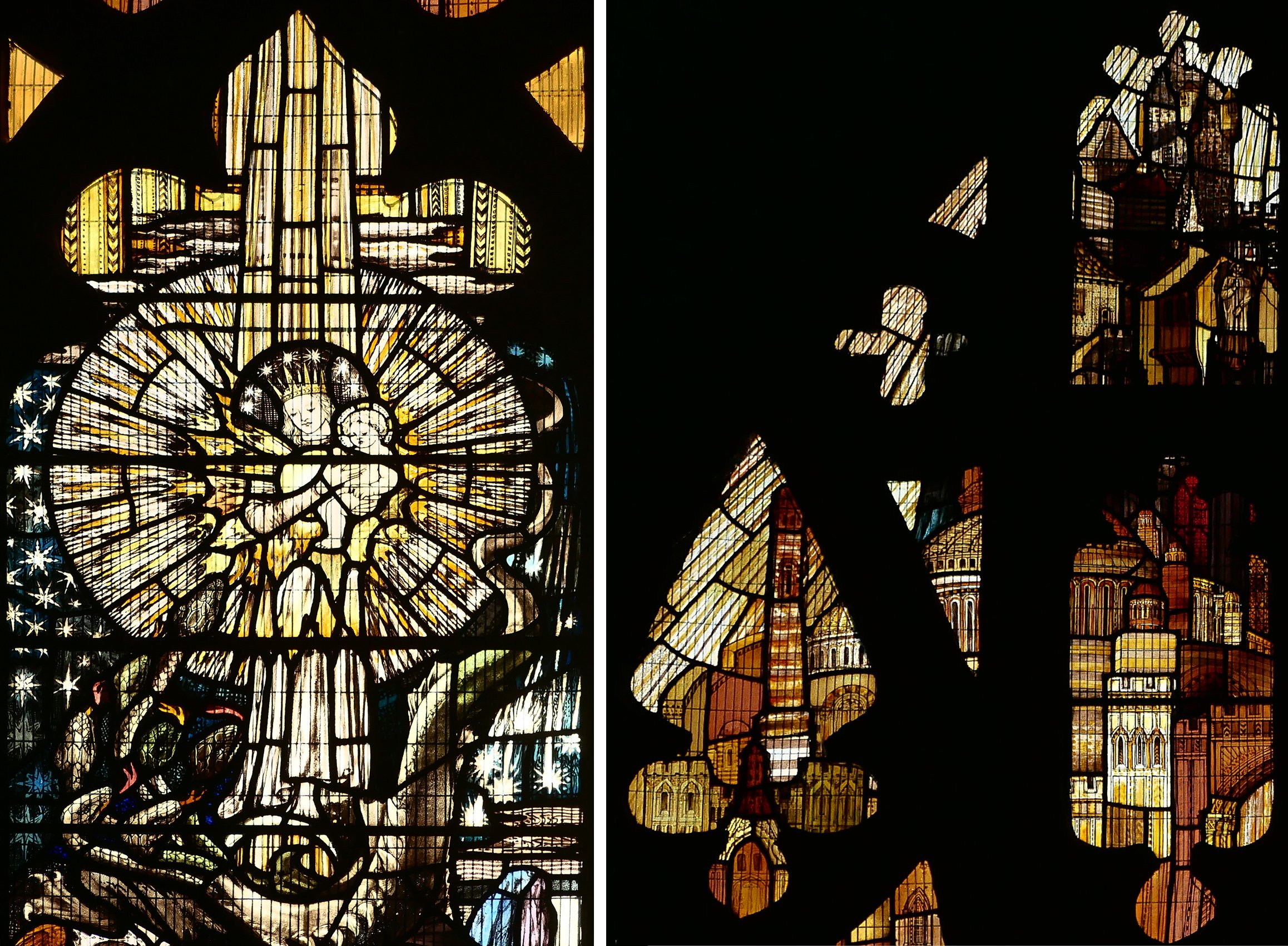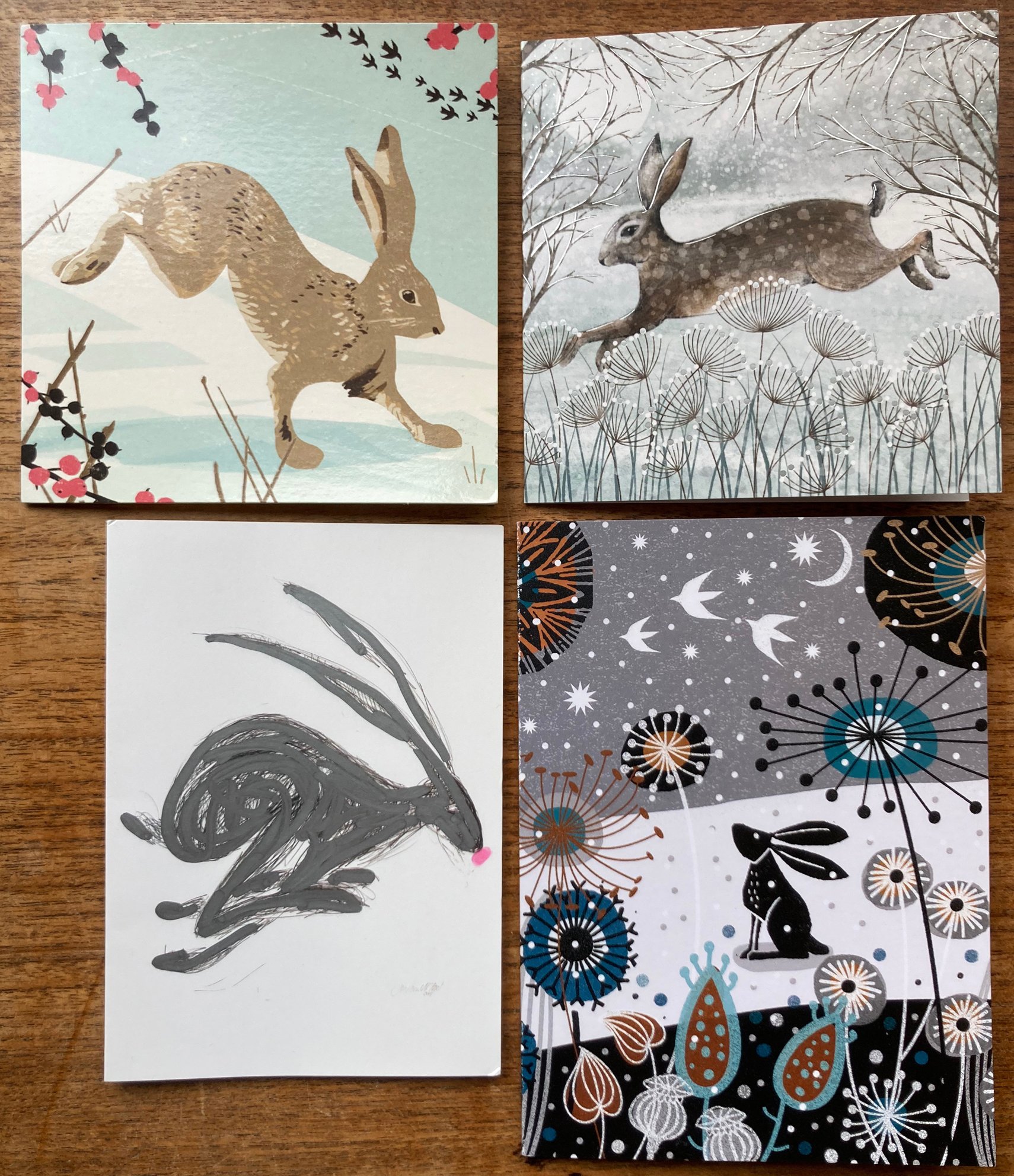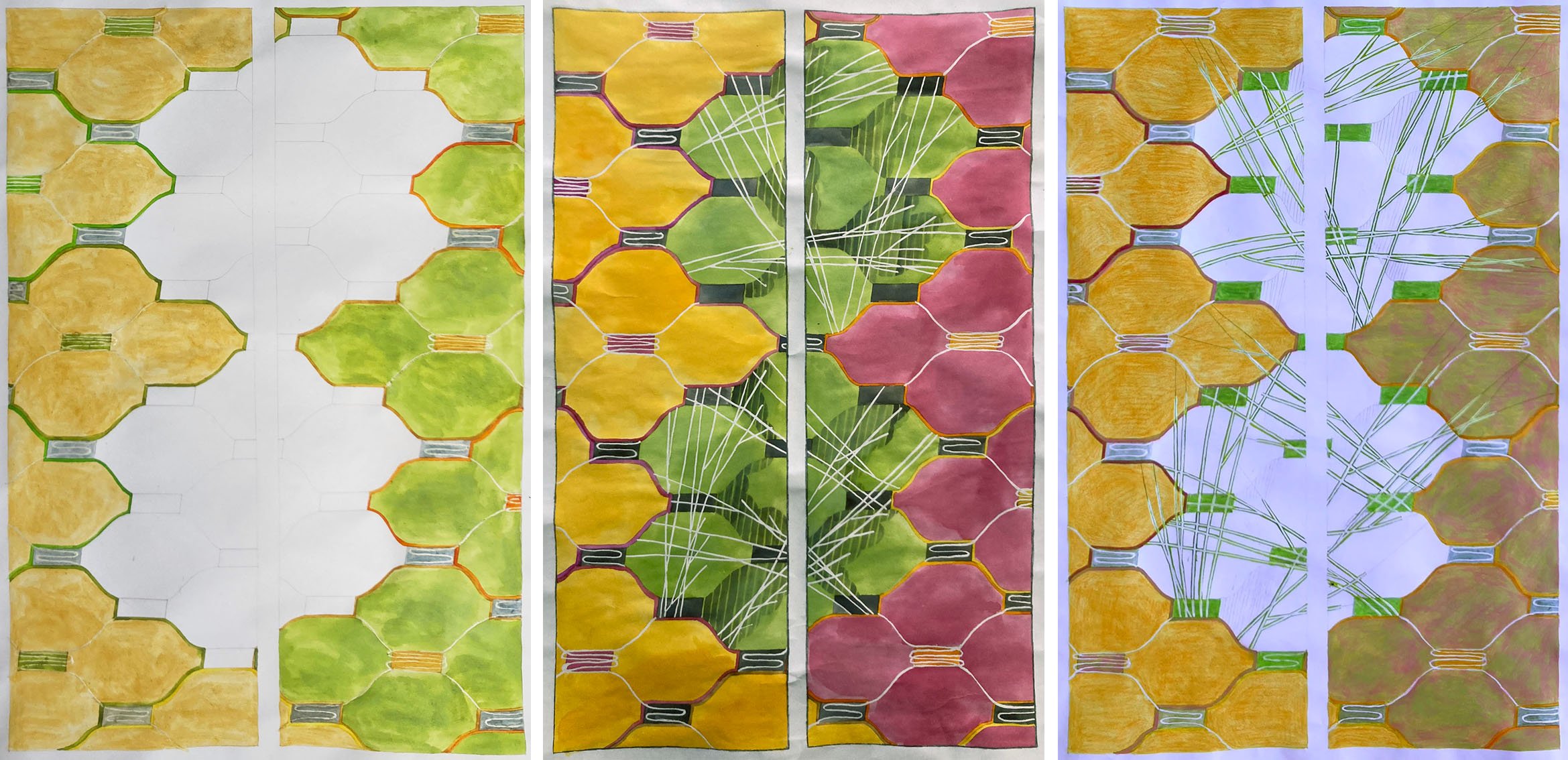St Nicholas, Asthall. Tomb of Lady Joan Cornwall with medieval glass above, window in the painted chancel.
We took a route along the river Windrush in Oxfordshire starting at the village of Asthall, then to Swinbrook, past the deserted medieval village of Widford into Burford and back. There are four superb churches within these three miles. St Nicholas, Asthall (above and below) was unexpectedly spectacular, with painted walls, a huge tomb and some subtle stained glass windows that compliment the interior where nothing is out of place.
St Nicholas, Asthall. Chancel and detail of the east window.
We were really here because Asthall Manor was the favourite childhood home of the Mitfords and most of them are buried at the next church along the river, St Mary, Swinbrook. In her letters Jessica writes about walking across the fields to Burford to try and get the school there to take her on, so I knew it couldn’t be far. Nancy and Jessica were the only ones of the six sisters to complain about their lack of schooling, unfortunately we were not able to pay our respects to Jessica as she chose to be scattered at sea but Nancy is here along with Pamela, Unity, Diana and other Mosleys (below left).
Left: Mitford graves at St Mary, Swinbrook. Right: Frozen flooded fields beside the river Windrush.
St Mary, Swinbrook. The Fettiplace monuments in the chancel.
Inside the church are two sets of monuments (above) which put those poor little gravestones in the shade. The first set was ordered by Sir Edmund Fettiplace who died in 1613 for himself, his father and his grandfather: Sir Edmund Fettiplace II (who died in 1680) ordered the second set for himself, his uncle and his father. Again there is nothing ugly or unconsidered in this church, even the bibles are stylishly arranged on the chairs (below left). Next to them is a window made from fragments of ‘old glass’ that tell an interesting story - not least of the vicar who inexpertly arranged this glass with the text split by the stone mullion making it hard to follow.
St Mary, Swinbrook: window with an interesting story.
Interior details from St Oswald, Widford.
Next to St Oswald, a tiny church in the fields a bit further along the river that was built on the base of a Roman house or temple. Here there are plain windows, more of those simple chairs, pink plastered walls and the remnants of fourteenth century wall paintings, including a St Christopher opposite the south entrance door (above left).
St John the Baptist, Burford, south window of south transept by Christopher Whall, 1907.
After these three beautiful interiors, entering the much larger church in Burford with its inevitable clutter of merchandise, furniture and audio visual equipment is a bit of a shock. However the Christopher Whall window in the south transept is one of his masterpieces, I kept going back for another look as I caught glimpses of it from different angles that showed how subtle both the colours of the glass and the arrangement of the design are, even with a bright winter sun shining through. I am always keen on paintings of the heavenly city, shown in the top section here and providing an interesting comparison to the city depicted in the earlier east window at Asthall. The bits of restrained patterning that link the top and bottom sections of the window are particularly satisfying (below left), as is the pair of little quatrefoil windows that just contain non symmetrical arrangements of beams of light behind the buildings which Whall drew from places he knew and loved.
Details from the Chrustopher Whall window in Burford.

































